|
|
 |
|
Teresa Higginson : the schoolteacher-mystic
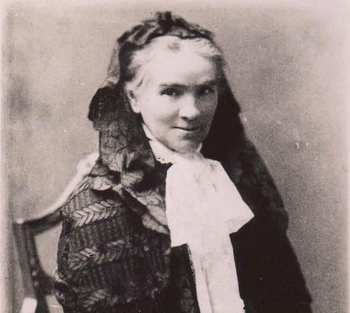
|
| Teresa Helena Higginson |
When you first hear this name, you'd be forgiven
for raising an eye-brow! It’s a homely, english name to be linked with the heights of Catholic mysticism. Yet Teresa’s
spiritual director said that he believed she was 'one of the greatest saints that God had raised up in his Church'.
She certainly led an extraordinary life from a mystical point of view, similar in many respects to the famous capuchin saint
Padre Pio. And the message she brought is quite possibly indispensable for our modern world. It is a century since her death and she seems to have faded from view to some degree.
There was a time when she was very well known. A Mary Cahill wrote in the Tablet of 8th Jan 1938: ‘By means of articles,
lectures and meetings, teachers all over the country have been invited to take up the cause of Teresa Higginson’. Another
letter from Monsignor O’Brien (the vice-postulator for her cause) tells us that he had received letters bearing witness
to her sanctity and petitioning for her beatification from all parts of Great Britain and Ireland, France, Germany, Italy,
Holland, Belgium, Malta, U.S.A., Canada, West Indies, Brazil, India, China, Burma, Borneo, South Africa, Uganda and New Zealand.
Today her memory is kept alive in fewer places. Yet perhaps as with the case of Faustina Kowalska of the Divine Mercy, her
cause has been delayed for the appropriate time when her name would be universally known and honoured. Many believe that time
is now. This website hopes to provide the compelling reasons to justify such an assertion. |
 |
There have been several books published on Teresa, but the
most authoritative source is the life written by Lady Cecil Kerr. She begins by telling us about Teresa’s family background.
Her father, Robert Higginson, was educated at Stonyhurst College and became an agent to the Estate of Lord Dillon in Roscommon,
Ireland. Whilst staying in Dublin, he was taken to a Ball where he met Mary Bowness. She had become a Catholic after a visit
to Rome, but had been totally ostracised by her family as a result. The romantic story behind it all attracted Robert. They
married and moved back to Gainsborough in England. Robert found employment in charge of the canals. Whilst pregnant with her third child Mary became ill and made a pilgrimage to the
shrine of St Winefride in Holywell, North Wales to pray for healing. It was here, on 27th May 1844, that Teresa
was born. 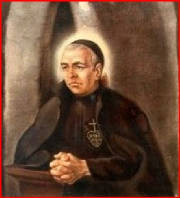 Only 15 years had elapsed since the Catholic Emancipation Act; places of public worship for Catholics were still few and far
between. The Higginsons’ home became the Catholic centre in the neighbourhood. It had a small oratory where Mass could
be celebrated and many priests stayed there. One of the frequent visitors was Blessed Dominic Barberi (right, now
famous for receiving Blessed John Henry Newman into the church). He baptised Teresa’s sister Louisa who
was three years younger and must have known Teresa well. Only 15 years had elapsed since the Catholic Emancipation Act; places of public worship for Catholics were still few and far
between. The Higginsons’ home became the Catholic centre in the neighbourhood. It had a small oratory where Mass could
be celebrated and many priests stayed there. One of the frequent visitors was Blessed Dominic Barberi (right, now
famous for receiving Blessed John Henry Newman into the church). He baptised Teresa’s sister Louisa who
was three years younger and must have known Teresa well.
Fr Ignatius Spencer (ancestral
relation of Prince William) was another friend of the family and nicknamed Teresa his ‘little apostle’ for the
way she tried to spread his league for the conversion of England. The only real source of her early days is her own, written under obedience to her spiritual director. She
had five sisters and three brothers and appeared to be the ringleader with quite a dominant personality. She often managed
to get her way with her parents on an issue if she thought it worthwhile, through sheer strength of will. She was educated
by governesses, but her parents made sure she was trained in all the Church’s seasons and feasts. They were careful
to teach love for the poor: every day the first helping of food was set aside for the next homeless person who called. If
no one came by the evening, her parents would say ‘we’ve had no visit from Our Lord today’. One particular
spiritual practice that Mary Higginson taught her children was the Presence of God; to imagine Jesus always at their
side. Teresa firmly believed this was a powerful influence for good in her life. When she was four Teresa remembered offering herself to the Holy Trinity. It was the feast of the
Presentation of Our Lady (November 21st) and she had heard how Mary had presented herself to God in the Temple.
She decided to do the same thing and went quietly into their oratory to make her own act of offering to God. She felt that
He accepted her offering, and gave her some level of understanding of the Trinity. She also remembers her first sin. Teresa and her family had been out for a walk. When they got back,
her mother called out to her to hang up her hat, but she pretended not to hear. This almost unnoticeable act of disobedience
somehow impressed on her an intense horror of sin. Rather incredibly, her spiritual directors later stated that they really
believed this was the only confessional matter of her whole life. Sharing
the cross From her childhood onwards,
she felt a deep longing to share in Jesus’ suffering and had a sort of burning love for him that was hard to assuage.
This expressed itself in personal mortifications that can seem shockingly severe and inhuman to us (although in the context
of the lives of other famous mystics, these things appear to be almost commonplace). Teresa later recognised that some of
these self-inflicted penances were imprudent. But she also noticed that when she was nursed during illness, marks left on
her body would escape notice; she took this to be some form of acceptance and protection from Jesus. Above all, she always
practised impressive self-discipline, resolving to ignore all her personal likes and dislikes, and to deny any satisfying
of the senses. When she was ten, she was sent
to the convent school in Nottingham with two of her sisters, under the advice of Bishop Roskell. She was very homesick at
first, but settled in and was to remain there for eleven years. There were no outward signs of saintliness. In fact Teresa
describes herself as a wild-spirited tomboy. Nevertheless she gives various anecdotes of her school-life which do reveal an
interior heroism and generosity. There were times when she felt in complete darkness and dryness in her spiritual life –
even a sort of repulsion for religious things – but she would only spend longer times in prayer during these periods.
Possibly as a result of illness, she made her First Holy Communion quite late, at the age of 12. She records feeling no noticeable
spiritual consolation whatsoever. 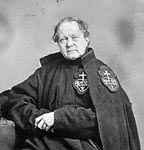 Before leaving the convent, at the age of 21, she went to visit Fr Ignatius Spencer for advice as to whether she should become
a nun. As soon as he saw her, he immediately said a Glory be aloud and thanked God that she had come to see him.
He told her that she did not have a vocation to be a nun, though she would later live in a convent, but that she should work
as a teacher. He assured her that God had special designs on her – that she must be very faithful and open to her confessor
and that if lost her damnation would be awful. He also warned her about making friends; Our Lord would send these when necessary. Before leaving the convent, at the age of 21, she went to visit Fr Ignatius Spencer for advice as to whether she should become
a nun. As soon as he saw her, he immediately said a Glory be aloud and thanked God that she had come to see him.
He told her that she did not have a vocation to be a nun, though she would later live in a convent, but that she should work
as a teacher. He assured her that God had special designs on her – that she must be very faithful and open to her confessor
and that if lost her damnation would be awful. He also warned her about making friends; Our Lord would send these when necessary.
About this time her father lost all his money on some disastrous
cotton dealings. Teresa had to go from shop to shop looking for sewing to do and they often made fun of her. Gradually, however,
the family’s position improved.
|
 |
The call to teach 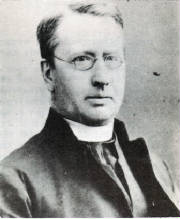 In 1871 a smallpox and cholera epidemic broke out. The area of Liverpool was particularly affected and the parish priest of
Bootle, Fr Edward Powell (left), had to apply to Notre Dame teacher training college for a new teacher in his
school. It had none to spare, but recommended the sister of one of its past students who had an amazing influence on children.
This was Teresa. She leapt at the chance of going to Bootle, heroically conscious of the health risk, and stayed for over
a year. She was able to become a daily Communicant (uncommon in those days). Fr Powell saw that she was an excellent catechist
and encouraged her to acquire a teaching certificate which she was very promptly awarded. In 1871 a smallpox and cholera epidemic broke out. The area of Liverpool was particularly affected and the parish priest of
Bootle, Fr Edward Powell (left), had to apply to Notre Dame teacher training college for a new teacher in his
school. It had none to spare, but recommended the sister of one of its past students who had an amazing influence on children.
This was Teresa. She leapt at the chance of going to Bootle, heroically conscious of the health risk, and stayed for over
a year. She was able to become a daily Communicant (uncommon in those days). Fr Powell saw that she was an excellent catechist
and encouraged her to acquire a teaching certificate which she was very promptly awarded.
In 1872 she went to the village school in Orrell and then to St Mary’s, Wigan
for three years. A colleague describes her: "She
appeared about thirty years of age (though I have since learnt that she was much younger than she looked). She was about five
foot two inches in height, her body seemed much emaciated though her face was not too thin. She had what people here call
a wizen face, i.e., 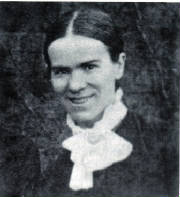 shrivelled and sallow. Her hair was dark, eyes also dark, small, very quick and bright, her general expression very pleasing;
in conversation she was animated, witty and humorous. Her movements were quick and sprightly and she seemed always on the
alert and entered heart and soul into everything she took in hand. Her dress was often odd. She never cared whether her clothes
were in taste or ill-fitting, in fact never seemed to have a new costume and as she had literally no regard for money I came
to the conclusion that her clothes were simply her sisters’ cast off clothing, and that she squandered her salary in
buying books and objects of piety for others and in charity, so that she never had the wherewithal to buy a decent outfit.
Such was Miss Higginson as I remember her. . . . From the first day I met her until we parted I could never find fault with
her in any way. She was never cross-looking or out of humour and her pupils idolised her. She seemed to live in the presence
of God and always introduced some religious topic into the conversation without boring one with an overdose of piety, or seeming
to preach." shrivelled and sallow. Her hair was dark, eyes also dark, small, very quick and bright, her general expression very pleasing;
in conversation she was animated, witty and humorous. Her movements were quick and sprightly and she seemed always on the
alert and entered heart and soul into everything she took in hand. Her dress was often odd. She never cared whether her clothes
were in taste or ill-fitting, in fact never seemed to have a new costume and as she had literally no regard for money I came
to the conclusion that her clothes were simply her sisters’ cast off clothing, and that she squandered her salary in
buying books and objects of piety for others and in charity, so that she never had the wherewithal to buy a decent outfit.
Such was Miss Higginson as I remember her. . . . From the first day I met her until we parted I could never find fault with
her in any way. She was never cross-looking or out of humour and her pupils idolised her. She seemed to live in the presence
of God and always introduced some religious topic into the conversation without boring one with an overdose of piety, or seeming
to preach." Supernatural happenings It
was about this time that people noticed strange and supernatural things about her. She would fall into periods of apparent
unconsciousness: ecstasies. She seemed to survive on the Blessed Sacrament alone for up to three days at a time. A fellow
teacher who became a very supportive friend, Susan Ryland, recorded some of the occurrences that took place. "At the bidding of Father Wells she cured a child
of some chest disease. She used common Lard (as an excuse I suppose). The child's mother asked me afterwards for some of the
ointment. Teresa said to me: 'What am I to do? It is only common Lard.' One night she came from Church where she had been doing the altar, etc., bringing with her a
duster or so to wash. There was no common soap in the house. I suppose we had forgotten it. She asked me had we nothing but
the good soap and when I said no, she remarked it was against holy poverty to use that for dusters. I turned away but happened
to turn back just in time to see a pound of common soap on the table and Teresa stretching out her hand to take it, as it
was nearer to where I was standing than to her. I am not sure but I think she laid down the money necessary to pay for it.
I am quite certain there was no soap on the table when I turned away. Another time I had forgotten, or did not notice, that there was no wood in the house. In the
morning I wanted to light the fire. Teresa was in bed. I went in to her and said: 'We have no wood and I want to light the
fire.' She said: 'There is plenty in the sacristy.' But I said: 'The Church is not open yet.' 'Very well,' she said, 'ask
St Joseph for some.' I said: 'You ask him, he won't do it for me.' Then she said: 'Have you been to such a cupboard?' I said:
'Yes, and there is none there.' 'Well, go and look again.' I went and found a quantity of nice pieces not like the wood we
bought. The key of her school was once
lost. We kept it in the school-house, and when she wanted to enter it was not to be found. I searched the house for it, so
did she. She then went up to the parlour and I think knelt by the table. Presently she came out with the key in her hand and
looking very pale. I said to her: 'What on earth is the matter with you? You look frightened to death.' (It was unusual to
see her like that.) 'Yes', she said, 'I was frightened because I saw nothing but a white hand put the key down.' There are many other such stories, including anecdotes from
her brother and sisters. She began to suffer
mystically during Lent. Fr Thomas Wells, her parish priest, was a holy and zealous man and he took her seriously. He contacted
a moral theology lecturer at Ushaw College for advice and consequently began to impose trials and humiliations to test her. Just as with the Curé of Ars and Padre Pio, the devil
became very active, shaking furniture and howling at night or mimicking the crying of children in the locked-up school, throwing
objects or even spitting things on Teresa. She revealed later that she was often put through strong temptations against various
virtues. On the Friday before Holy Week 1874,
in the midst of terrible suffering, she was endowed with the stigmata. Several of her friends and those who nursed her testify
to having seen wounds on her hands and feet and thorn-marks on her forehead. It all troubled her humility. She repeatedly
begged Jesus to remove the marks but increase the pain. During her last illness her nurse saw no wounds. Her spiritual director, Fr Powell, the only one to whom she revealed her soul at
this time, recognised the suffering that was to prepare her for the mystical espousal. According to some letters she wrote
to him, Our Lord gave her this grace on the feast of the Sacred Heart 1879. The Espousal or Spiritual Betrothal is a stage
in the ascent towards union with God recognised by St Teresa of Avila and St John of the Cross. It is now believed that it was in 1874 or 1875, that she first
experienced Christ’s desire that his Sacred Head be worshipped as the Seat of Divine Wisdom. Two letters from
Margaret Ashworth, nee Woodward, (a teacher friend) in 1933 recount how she believed she was the first to hear Teresa
speak of our Lord's desire for the devotion - as she came out of church on Good Friday. Mystical Communions In
July 1875, her friend and support Susan Ryland left Wigan and a few years later entered the Sisters of Charity. Fr Wells was
continuing to inflict trials on Teresa, but (as in the lives of other mystics) he seemed to go too far. Teresa became ill.
She resigned in Christmas 1875 and her parents made her return home to recover her health. She was sent an exemplary testimonial
from Fr Wells. Once back in full health, she
applied to a few other schools and settled in a Jesuit mission in Sabden, near Clitheroe. It was very remote, the salary was
low and the only lodgings were with a non-Catholic. She soon settled in, however, and began to make her mark on the school.
She got to know some of the Mill girls at Clitheroe, encouraging them to go to daily Mass and Holy Communion. A member of
a family with whom she used to stay wrote this description of her: "My recollections of her are most vivid. She was sweet and gentle and quite
homely, so much so that the younger members of the family usually found their way to her and they would crowd around her while
she told them stories or sang hymns, sometimes amusing the babies by making her Child of Mary medal whistle. Her attitude
at prayer specially struck me: she knelt motionless, her eyes fixed on the tabernacle. If ever I chanced to go to Mass alone
I invariably knelt where I could see her instead of going to our own bench in Church. On one occasion she got permission to
take myself and my eldest cousin to Mass at Sabden. She entertained us the whole day showing us her school, etc. I well remember
the caretaker of the school chapel, a woman, saying she spent the whole of every Thursday night before the Blessed Sacrament
and that she had seen drops of blood upon her forehead on the Friday. The children, too she said, saw it, and had become quite
used to the sight." Unfortunately
for her there was no daily Mass in Sabden and Teresa experienced extraordinary deprivation upon not being able to receive
daily Communion. Our Lord made supernatural provision for her and she began to receive mystical Communions, sometimes three
or four times a day. This occurrence was witnessed by several people throughout her life; they would suddenly become aware
of a host materialising out of the air and alighting on her tongue. In 1879 her health again broke down and she had to return home. Again the Priest’s testimony was excellent: "I have much pleasure in saying
that Miss Higginson, during the eighteen months she had charge of our school at Sabden, gave every satisfaction, both to the
children and to their parents. She was most devoted to her work and has a special talent for attracting children to her school.
She left Sabden on account of illness." 'A very beautiful soul' After regaining her health, she soon started to yearn for work once more, and to be able to get to
daily Mass. She contacted Fr Powell for his advice and he in return requested her, under obedience, to write out for him the
history of her hidden interior life. In all about 125 letters were written, from June 1879 to 1881. It was also about
this time that Jesus began to show her a beautiful and very faithful soul living in her parish, ‘one of the centrepieces
of his Sacred Heart’. She seem to feel both humbled and consoled by it. Both Fr Powell and her later director Fr Snow
realised that this soul was in fact Teresa herself! Return to Bootle In autumn of 1879, Fr Powell offered her a post in his own school of St Alexander’s, Bootle.
She began work on 1st October and lodged with a widow, Mrs Nicholson, and her 14 year-old daughter Ellen, above
a shop. Ellen noticed several strange things, but because she had only recently become a Catholic, she thought they were normal!
Teresa’s contemporaries describe her as impressively calm, with a retiring disposition, but also a great strength
of will and self-control. She was never excited or over-emotional, but utterly sane. She suffered from strange attacks of
weakness and would often be found prostrate in the mornings. After receiving Holy Communion, she regained her strength. Despite
her best efforts, her mystical wounds were noticed and upon returning home for the summer holidays, her family became alarmed
at her ‘fainting fits’ (ecstasies). In her letters to Fr Powell, Teresa saw these things as means for increasing
her humility. Church authorities take an interest In 1883, Mrs Nicholson died and Teresa went to lodge in Ariel Street with some fellow teachers. They became
very aware of the devil’s attacks. They would be woken up at night by violent crashes, unearthly shrieks, laughing and
other occurrences. Fr Powell was quite aware of the situation and told them not to be afraid as the devil could do no harm
to them. Inevitably, Teresa began to evoke interest.
The Church authorities were approached. Various priests were brought into contact with Fr Powell concerning her. Monsignor
Weld studied the letters between her and Fr Powell and declared himself impressed with her: "If all the information I have received is correct…
she presents a case of extraordinary love of God and zeal for the salvation of souls, profound humility, unhesitating obedience,
love of mortification and suffering only to be paralleled by some of the greatest saints. This seems to date from her infancy.
If all this is true we should not be surprised if Our Lord bestowed upon her some of the favours which He usually bestows
on such souls."
|
 |
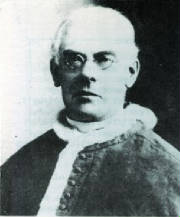 Fr Hall O.S.B. also undertook a careful investigation of her writings and at first seemed very well disposed to her. Nevertheless
he completely changed his mind, possibly after reading about her bilocations which he could not accept and he became hostile
to her cause, claiming all to be the fruits of an over-active imagination. Consequently, the bishop requested Teresa to change
her spiritual director, stating "if it is the work of God it will prosper in spite of opposition." Teresa obeyed
wholeheartedly, although it must have been profoundly painful, as she believed Fr Powell was the only one who really understood
her. Fr Alfred Snow (later Canon Snow - left) who took over was to direct her for the last 22 years of
her life. He turned out to be a Godsend for her, since he showed tremendous solicitude to her, both temporally and spiritually,
and undertook an in-depth study of mystical theology. Fr Hall O.S.B. also undertook a careful investigation of her writings and at first seemed very well disposed to her. Nevertheless
he completely changed his mind, possibly after reading about her bilocations which he could not accept and he became hostile
to her cause, claiming all to be the fruits of an over-active imagination. Consequently, the bishop requested Teresa to change
her spiritual director, stating "if it is the work of God it will prosper in spite of opposition." Teresa obeyed
wholeheartedly, although it must have been profoundly painful, as she believed Fr Powell was the only one who really understood
her. Fr Alfred Snow (later Canon Snow - left) who took over was to direct her for the last 22 years of
her life. He turned out to be a Godsend for her, since he showed tremendous solicitude to her, both temporally and spiritually,
and undertook an in-depth study of mystical theology.
About
this time rumours began to circulate about Teresa: that she was a fraud and in fact underneath it all a thoroughly vile and
evil sort of person. Many who knew her were taken in by the rumours. Some said that despite her fasting they had seen her
gorging herself greedily and loitering in a drunken state in dark alleyways. Fr Powell interpreted this time as the "clamour
of tongues", a recognised state of purification in the spiritual life. He himself was moved to another parish and his
successor maltreated Teresa, refusing to bring her Holy Communion and reacting in quite violent ways towards her. Things seemed
to reach a climax and her friends moved her to another parish where she could be at peace until the added mystical sufferings
of Lent 1886 were over. She then returned home only to be told she was not wanted back in Bootle. Teresa's soul is purified Teresa
started working in a parish mission in Eccleshall in Birmingham diocese, but this shortly closed down so she found further
work near Blackburn. Under the instigation of two of her most loyal friends, Fr Snow asked her to join them at their school
in Newchurch. She arrived there on March 24th 1887 and suffered the worst Lent she had yet experienced; she was
totally bed-bound. The priest, Fr Musseley, believed in her and both he and his housekeeper, Margaret Murphy, befriended and
supported her. They described her as a very happy, jolly sort of person, who amongst other things enjoyed cooking tasty meals
for other people. At the end of July she went
to say with another friend, Elizabeth Dawson, in Clitheroe. Here she could attend Mass twice a day and visit the Blessed Sacrament
whenever she wanted. Fr Musseley wrote to her asking her to take up an official post at Newchurch school, which Teresa accepted
despite the fact that she would not be able to attend Mass even on Sundays. This was no insignificant acceptance; it gave
her great pain. Her director later recognised it as the ‘purification of spiritual desires’. In the event, however,
Teresa was not needed and she stayed on at Clitheroe. An extraordinary grace It was at this time that she wrote two letters to Fr Powell and Fr Snow humbly describing
an important occurrence. On the night of the 23rd of October 1887 Our Lord revealed to her that He was uniting
her will to his in the presence of the whole court of heaven. Fr Snow later wrote of the spiritual marriage: "Although
it is the highest state of union a soul can attain in this life, still God is able to communicate Himself more and more to
the soul and the soul can more and more advance in holiness and merit." Teresa was to live for over 17 years afterwards.
Her life, however, became commonplace; the outward signs of the supernatural seemed to vanish. A prophecy fulfilled 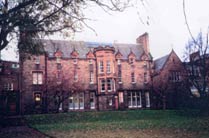 Fr Snow wrote to his sister who was Mother Superior of the Sisters of Mercy at St Catherine’s Convent, Edinburgh. He
explained Teresa’s status and asked for her to be able to come and live quietly among them with no questions asked.
She went on to live there for twelve years (fulfilling Fr Ignatius' prophecy), helping out in the local schools and parish
missions of Dalkeith, Linlithgow and Selkirk but remaining very unobtrusive. She continued to suffer, especially during Lent.
Many came to recognise her sanctity in the midst of her outwardly humdrum existence. Fr Snow wrote to his sister who was Mother Superior of the Sisters of Mercy at St Catherine’s Convent, Edinburgh. He
explained Teresa’s status and asked for her to be able to come and live quietly among them with no questions asked.
She went on to live there for twelve years (fulfilling Fr Ignatius' prophecy), helping out in the local schools and parish
missions of Dalkeith, Linlithgow and Selkirk but remaining very unobtrusive. She continued to suffer, especially during Lent.
Many came to recognise her sanctity in the midst of her outwardly humdrum existence.
In July 1899, Teresa returned home to Neston. Later Fr Snow asked her to come and help attend to
the sick sister of the headmistress of his own school. Apparently Teresa was a very lively nurse, often singing and performing
comical dances for her patient. In September 1900, an Edinburgh friend, Mrs Fleck, took Teresa on pilgrimage to Italy where
she met Pope Leo XIII in audience and visited many holy places. The journey to calvary In
1903 Miss Garnett died and Teresa (aged 59 now) decided to look for a teaching post once more.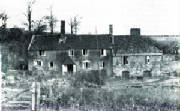 Eventually she was put in touch with the chaplain to Lord Clifford’s estate in Chudleigh in Devon. The school had been
set up for teachers of the workers. It was extremely remote, but Teresa seemed irresistibly drawn to it. She set off in January
1904 and arrived in the pouring rain. The schoolhouse (right) was Eventually she was put in touch with the chaplain to Lord Clifford’s estate in Chudleigh in Devon. The school had been
set up for teachers of the workers. It was extremely remote, but Teresa seemed irresistibly drawn to it. She set off in January
1904 and arrived in the pouring rain. The schoolhouse (right) was 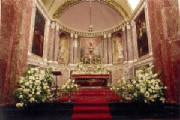 rundown, damp and infested with rats. The Church (left) was over a mile away. Teresa battled on despite enormous
difficulties. She soon began to influence the school children for the better and gradually her living conditions improved.
(You can see Teresa here standing behind the schoolchildren). rundown, damp and infested with rats. The Church (left) was over a mile away. Teresa battled on despite enormous
difficulties. She soon began to influence the school children for the better and gradually her living conditions improved.
(You can see Teresa here standing behind the schoolchildren). 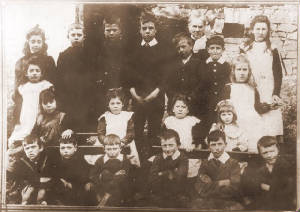 Whilst preparing to return home for the Christmas
holidays she suffered a stroke. The chaplain found a Catholic nurse, Miss Casey, to attend her during her last illness. This
nurse wrote about her experience in detail and fell thoroughly under Teresa’s holy influence, learning much about the
spiritual life. On February 9th Teresa said goodnight to Miss Casey, thanking her, and added: "Do not fear, dear child, but put your hand with loving
confidence into your Father’s hand and He will guide you through every path. And where the road is rough and stony,
He will carry you in His arms." 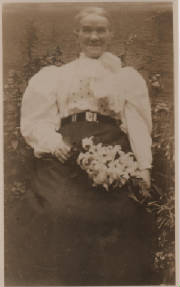 Teresa in 1904 Teresa in 1904
Shortly after this she fell into
a coma. Six days later on 15th February 1905, after several hours of apparent torment, she died. She was buried
at her family’s home in Neston.
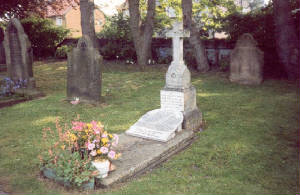
|
| Teresa's grave |
|
 |
|
|
|
|

|
| Window in honour of Teresa (in former La Sainte Union New College Chapel, Southampton) |
Teresa a saint? Teresa’s Cause for canonisation was taken to Rome in 1937. On 21st February 1938
Monsignor O’Brien the vice-postulator was sent a letter from the Secretary of the Congregation informing that the Holy
Office had pronounced the Non Expedire on the introduction of her Cause. The Non Expedire was a kind of
‘shelving’. It has been suggested
that perhaps this was Teresa’s emphasis on the public honour due to Our Lord’s Sacred Head that had had its part
to play in shelving her Cause; there had been several appeals for devotions to different parts of Our Lord’s body at
the time.Rome could have reacted against it. However, a letter from the Vatican in February 1949 confirmed
that there was no insurmountable obstacle to the Cause. Professor Paul Haffner has recently visited the offices of the Congregation
of the Causes of Saints in Rome; her Cause is still 'on the books' - awaiting its time. A miracle attributed to her
intercession could kickstart the cause once more. Photocopies of many of Teresa's letters and other papers (6,000 in total) have been collated and bound into
12 volumes which are in the public domain. One
set is in the British Library, London under System Number: 01115755 Title: The Collection of papers concerning the
Life and Mission of TERESA HELENA HIGGINSON compiled and arranged by M.C. Hutchings Physical desc: 12 volumes
- 30cm Subject: Stigmatics - biography Shelfmark: YA.2001.b.3522 Request A second set is in the archives of the Cathedral of
Christ the King, Liverpool, under: Title: 12 volumes of letters & papers belonging to Teresa Higginson Accession number: 44/1,
Catalogue reference: 44/ - 44IV Her prayers are being requested all over the world. Many testify to favours granted. In his letter for the new millennium (Novo Millennio Ineunte), Bl Pope John
Paul II emphasised the importance of holiness of life for the New Evangelisation. In Teresa we have a marvellous example of
holiness. In the midst of a very ordinary life, she witnesses to the supernatural reality of our faith through prayer, sacrament
and a most wise love. As a single laywoman living in the world, she has an obviously contemporary appeal. As a schoolteacher,
she is a powerful patron for the teaching profession in these difficult days. With her links to England, Scotland and Wales,
she could surely prove a new patron for us all in these lands. Yet above and beyond the importance of her holiness is that of her God-given mission. Even the atheists
and agnostics of our day are conceding the signs of crisis in society. They have demonstrated admirably that they do not have
an answer. It seems clear that after so many years of abeyance, Teresa's time has come. Her mission is to lead us back to
God and to a bright and noble future founded on a deeper appreciation of the wisdom of Christ. It is now up to the laity to act and in so doing convince
the Holy Father of universal devotion to Teresa and to the Sacred Head of Our Lord.  |
|
|
 |

